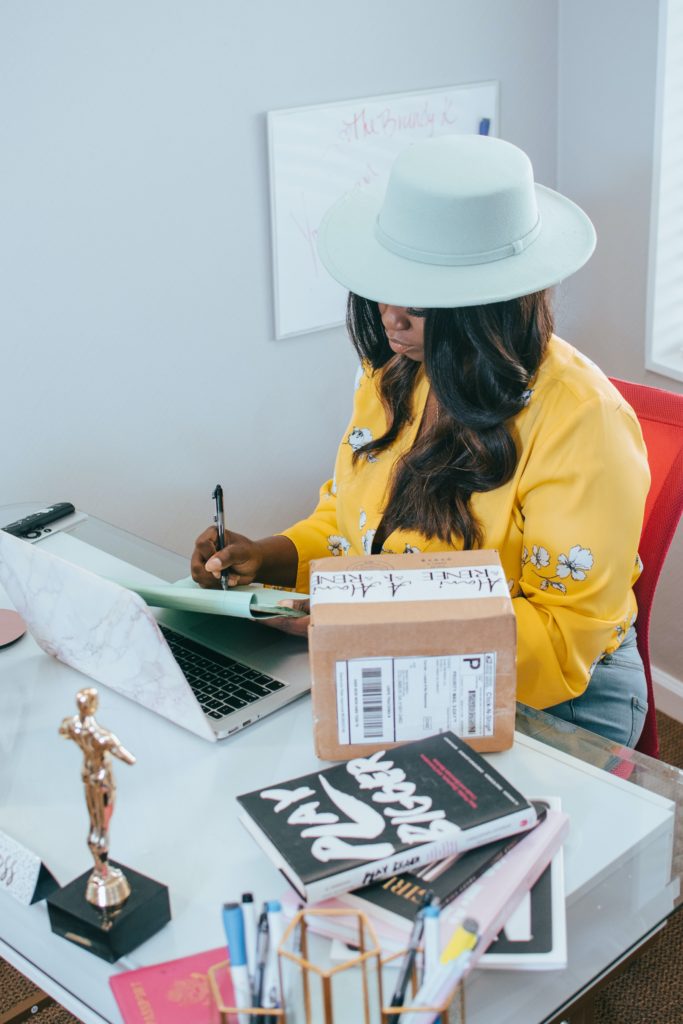Success looks different for many people. For me, success was rooted in a journey that began halfway around the world and led me to a lifelong passion that I am fortunate to share with others. Here is my story.
People often ask me if I’m from “the islands” (referring to the Jamaican Islands) because of my accent. My response always is, “Yes, but not the islands you’re thinking of.” Or they’ll mention how I have a unique look, and my answer to that is “thanks to my mother,” as I’m the spitting image of her. So, who am I, and where do I come from? Let me share. My story is unexpected and, to some, may sound made up. And sometimes, I look back myself and think it’s a dream.
I’ll start my story with my great-grandparents because if I go any further than that, this will be a 300-plus-page novel. My great grandparents met in the Philippines during World War I. My great grandfather, an African American, was a cook in the U.S. Navy stationed in Manila. During a sightseeing trip to Ilocos Sur, he met his future wife, my great grandmother, a Filipina. Once my great grandfather completed his service, he did not return to the U.S. but instead stayed in the Philippines to raise his family. He and my great grandmother had seven children; six girls and one boy, one of whom is my grandmother (who is still alive, by the way, at age 97).
I do not know much about how well my great grandparents and their children lived during that time. I never heard any stories of how they were treated or their source of income. My great grandparents raised their kids there into adulthood, and that is where my great grandparents died and are buried. Their children also had their own children there and some grandchildren.
So how did I come along? To be precise, my grandmother, a biracial Filipina African American and another African American in the U.S. military, then had my mother. Then during the Vietnam War Era, my mother and my father, an Air Force African American, had my older brother and me. My father had been stationed in Angeles City and met my mother in a club she owned during that time. We were all together for over three years in Angeles City until his assignment ended, and he returned to the states without us. Although my mother’s club continued to be our source of income, she sent my brother and me to live with my grandmother and our very big extended family in a Barrio called La Union in 1974.
Although my family lived in the only brick home in the Barrio, it housed at any given time about 13 to 15 people, including my grandmother, her siblings, my grandmother’s other adult children, several of my aunts and uncles, and cousins. My mother continued to send us money from Angeles City, but with this many people, it wasn’t enough. The other adults in the home worked manual labor such as rice picking or farming for other wealthier families miles away.
That was third-world country living. We did not have running water or electricity the majority of the time, but that was our life, and that was the norm. There were times when there was barely enough money to have food for everyone, but somehow, my brother and I were always fed. As I just recently found out from my mother, it was around this time my mother was able to enroll me in the Pearl S. Buck Foundation, an international charity that provides for children in need. I had always wondered why I used to have to pose and have my picture taken every month. I was sponsored through the foundation for about three years under its Amerasian program.
Fast forward a couple more years, and my mother met and married an electrician in the U.S. Navy in 1977, and they returned to the U.S. together. So, for three or so years, we did not see her, just received her letters. She continued to send money home, but life was still the same for us. What was, is it like, do you ask? Let me share:
Since there was no electricity, cooking was done with wood. We had a television, but it only was powered when we had money to pay for electricity. There was no running water, so bathing, cleaning dishes, and washing clothes were all done in the same body of water that, luckily, was only across the street from our home! And by the way, I had nearly drowned in that same body of water once, and that’s why I continue to fear open water today. No plumbing meant we had an out-house or went out into the woods. We had a bathroom in the home, but there was no running water to it. I do recall having someone give me a “washdown” from a bucket in that bathroom, only to look up and see a snake slithering on one of the walls. I never went back into that bathroom, and till this day, me and snakes are a NO-GO!! We had no medications. I suffered from asthma as a child, and the only thing I was given to relieve it was Vicks. And the most memorable harsh reality is the treatment we received for looking different. I remember getting into many fights because of it.
But the summer of 1981 was the beginning of how my life was about to change. My mother showed up to my surprise at our doorstep — from America! For someone who I hadn’t seen in years, she was like a dream to me, an Angel. I soon learned she was there to bring us back to America. As an 11-year-old, I was already beginning to understand that life where I was had to be better. And usually, “better” meant working in the city and or hopefully finding an American to bring you to the States. My mother made sure that didn’t have to happen.
Our paperwork to leave the Philippines took three months. I don’t think my mother expected that. Finally, we left on September 17, 1981, and arrived in Los Angeles. As much as I would like to say that my journey of pain and difficulty ended there, it did not. I stepped off the plane, not speaking a word of English except for, “Hello, my name is Melinda,” with a very heavy accent. I don’t even remember how long we were in our home to acclimate before registering for school. I remember standing in front of that fifth-grade class, being introduced, and I had no idea what was said about me. All I knew was all of those eyes were on me. I soon after experienced more mocking for looking different and not speaking English.
After about a year, we left Los Angeles and moved to San Diego. However, my experience was the same. My mother encouraged us to stop speaking our native language, Ilocano, at home to help us pick up English more quickly. We did our best to fit in, but my brother and I spent our pre-teen and teen years constantly being mocked. However, through those rough times, there was one thing that got me through it all. It is still very much present in my life and what I call the success in who I am and what I have been able to contribute to our society. That is DANCE.
Yes, dance. Five little letters that to some people may not mean much, but to me, means the world. There are times I look at that word, and I break down crying (like I am now writing this) because, to me, dance is so much more than what it has become. Dance is an art; it’s love; it’s a person’s soul that’s supposed to be shared for the purpose of making someone smile, not to receive a trophy. But I digress.
Believe it or not, my formal training for dance began a bit late. It started at the late age of 16 in a high school P.E. program at the University City High School in La Jolla, CA. Prior to that, my mother had always refused to put me into any dance classes. I never knew why; she just would not. While in the Philippines, I used to put on numerous dance shows for my family. I used to pretend I was one of the Solid Gold Dancers! Remember them? The home I grew up in had tiered steps in front, and I used to dance and slither down the steps just like those Solid Gold dancers. Yes, I did!
So, until enrolling in that P.E. dance program, dancing for the family was my outlet. However, being able to enroll in that program changed my life thanks to the wonderful Ms. Jose Scanlon, who changed my life. She noticed the love and talent in me and nurtured it for the four years I was with her, and I soaked it all in. Once I graduated, I put myself through college and meanwhile took dance classes, worked, and danced with local dance groups for about two years before I realized I could not do this long term. My goal was to dance still and become a dance instructor, but I had to figure out a better way to make that dream a reality. My mother had nudged my brother and me to join the military earlier in our high school career, but I thought I was always going to be a dancer. How was the military going to fit into that? After going through some difficult times working and putting myself through school, the military began to look really good. So, right after my 21st birthday, I visited an Air Force Recruiter, and I enlisted. I left for basic training in July 1991 for eight weeks in hot Texas. I was in my job training as a firefighter in Illinois during the winter of 1991 for another nine weeks. And then, I was shipped off to Germany by the end of that year for my first duty station.
With the whirlwind of that dramatic life change, I did not think about dance for over a year. However, as it was my first time away from home, and being a young 21-year-old woman — one of only two at that time in the fire station — I became depressed. I was there for not even five months and was already dealing with a sexual harassment case (another story altogether). I knew something was missing, and I soon realized that something was dancing. My body missed the movement, and my mind and soul missed the expression of moving and sharing it with others. I saw an ad that the Base Community Center needed someone to teach youth dance. I inquired and then presented the idea of Community Outreach to my Unit Commander, as I would have needed to leave my job a couple of times a week. It was approved, and it became more than an awesome bullet point for my yearly personnel review! I ran that program for the entire three years I was stationed there.
I left Germany in 1994 and was reassigned to Langley Air Force Base in Virginia near Hampton. While there, I continued dancing. I began taking dance lessons at Christopher Newport University to continue achieving my degree in dance. While finishing a dance class one evening, I came across their then dance team’s [Blue Wave Dancers] rehearsal. I stayed to watch and somehow became a coach. I worked with them for several months until I had my son.
We relocated to Northern Virginia in May 1999. Once we acclimated to the area, after about a year, I once again realized that something was missing in my life. That same day as I was driving home, I saw by way of another ad at the Community Activity Center by our home that they were looking for a dance instructor. By January 2001, !ACCENT! Dancers, my self-run dance program, was born. I taught at that center for 13 years, growing the program by myself with up to about 70 students, all the while still serving active duty.
I had a love-hate relationship with that center. I loved that I didn’t have to worry about overhead, enrollments, etc. But I hated that I was very limited in what I could do with it. Eventually, the center decided they no longer wanted to keep me, and I retired from the military in 2011 before my husband and I felt it was time to venture on our own.
We officially opened our physical !ACCENT! Dancers studio October 13, 2013. It is the most wonderful feeling to have the space to share this passion with other dancers who have the same mindset that I do. But I run my studio a little differently than most. My door is open to those brand new to dance, no matter their age, skill, or size. I do not yell at my dancers. I do not threaten them. We learn technique. We learn history. But most importantly, WE HAVE FUN.
It has not been easy. Not at all. Not everyone in the dance community is aligned with my philosophy. I’ve had to rebuild my reputation after a short stint with another dance instructor I had hired to teach some classes tarnished it because of the difference in our teaching styles.
Then there’s been COVID-19. The first year that I thought I was actually going to have a really nice profit, COVID hit. It’s been very difficult rebuilding from that, and I’m among those who have been unable to receive any of the stimulus funds. I applied twice, and both times was denied. The second time I was provided an approval email only to receive a denial email the following day. How does that happen?
Despite these hardships, you’d be surprised I still consider myself successful. I’m not a millionaire – I wish. I have multiple degrees and certifications, but I don’t brag about them. I barely talk about them, actually. No one even knew about my Honor Society membership. I am successful because I have been the avenue, the outlet for so many people to help express their artistry where they wouldn’t have been able to elsewhere. I have had hundreds of girls and boys come through my dance program. Some come through for a few weeks; some stay for a few months; some stay for a couple of years; and several stay for their entire school years (elementary to graduation).
I am successful because, for nearly 30 years, parents have trusted me and agreed with me on my teaching philosophy. A philosophy that I discovered which also aligns with a phenomenal organization in New York City, the Dance Education Laboratory (DEL), whose main purpose is to provide dance for every child. Just like its amazing founders say: no matter who you are, your age, your skill, your ability, the art of dance should be available to you. From the day I met them in 2016, and through numerous certifications, DEL’s teaching model is now the backbone of my studio.
Others may have a completely different definition of success. From the first words of this article, they may have expected something entirely different. Throughout my time as a dance instructor, I have been able to provide a safe place for many children and adults alike who just want to dance, just like I had always wanted, no matter who they are or what they look like. If that’s not success, then I don’t know what it is.










One Comment
This is [by far] one of the best articles I’ve read in a long time. I’ve worked with Accent Dance Studio in the past and the first thing I remembered steeping into her studio was the calm, inviting atmosphere she’d created. The air filled with children’s laughter and the smiles on each person’s face is something I’ll never forget. This type of space doesn’t come by happenstance – this was created!
Melinda, thank you for sharing your story with the world. Thank you for the many lives you’ve enriched with your presence over the years. I wish you continued blessings and much more success. The way you define SUCCESS!